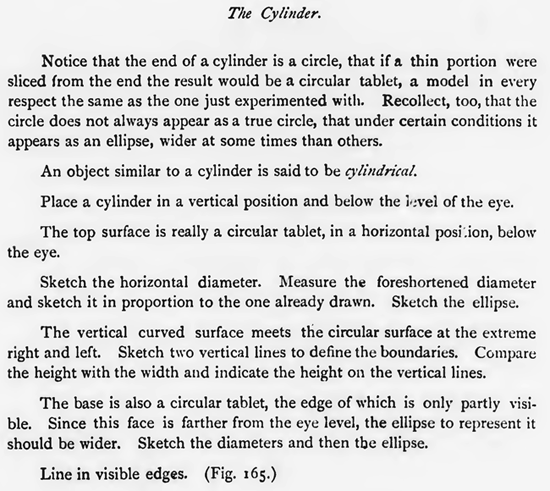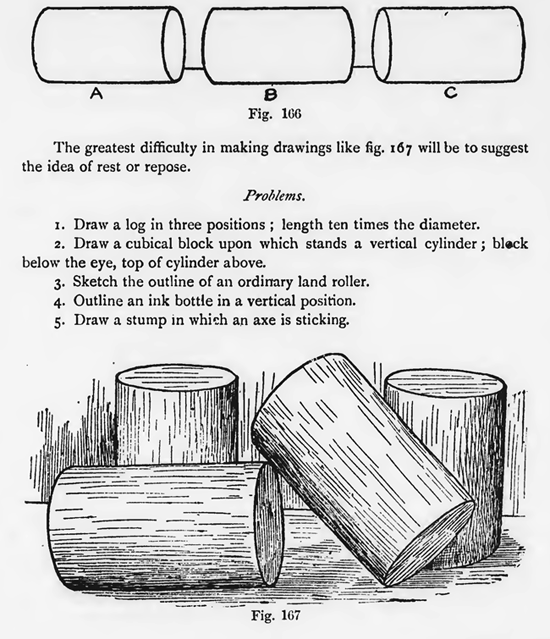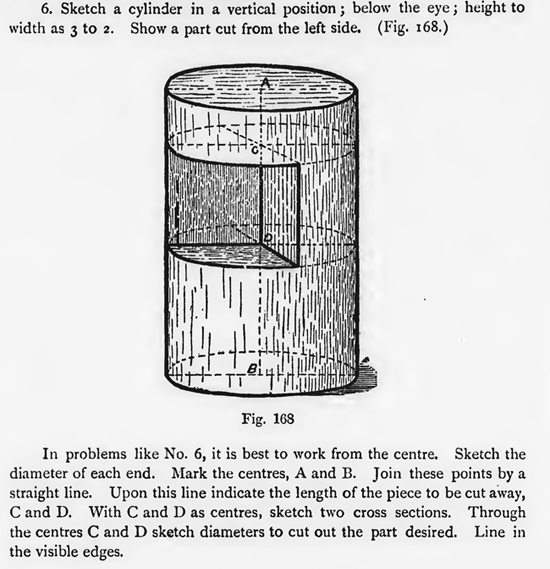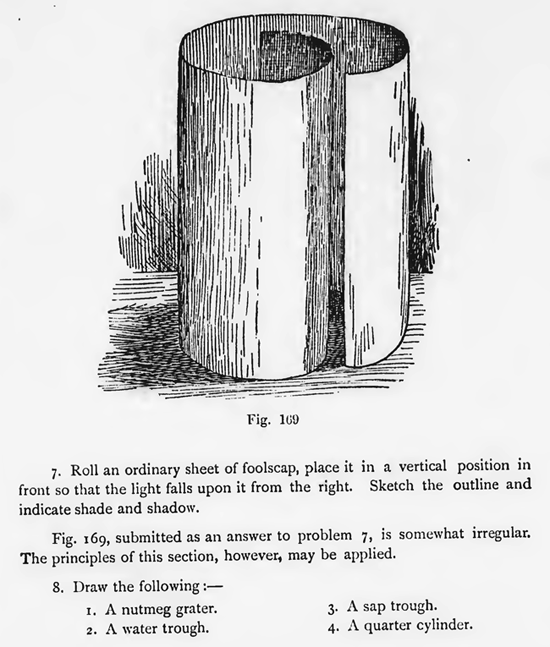Home >Directory of Drawing Lessons > Drawing Objects & Things > Geometric Shapes > How to Draw Cylinders
How to Draw Cylinders with Drawing Lessons & Tutorials
|
|
[The Text Above is Saved as Images, use the text below if you need to copy some text.] Drawing Cylinders.Notice that the end of a cylinder is a circle, that if a thin portion were sliced from the end the result would be a circular tablet, a model in every respect the same as the one just experimented with. Recollect, too, that the circle does not always appear as a true circle, that under certain conditions it appears as an ellipse, wider at some times than others. An object similar to a cylinder is said to be cylindrical. Place a cylinder in a vertical position and below the i Nei of the eye. The top surface is really a circular tablet, in a horizontal position, below the eye. Sketch the horizontal diameter. Measure the foreshortened diameter and sketch it in proportion to the one already drawn. Sketch the ellipse. The vertical curved surface meets the circular surface at the extreme right and left. Sketch two vertical lines to define the boundaries. Compare the height with the width and indicate the height on the vertical lines. The base is also a circular tablet, the edge of which is only partly visible. Since this face is farther from the eye level, the ellipse to represent it should be wider. Sketch the diameters and then the ellipse. Place the cylinder in different positions. Draw and compare with fig. 166 and 167. In fig. 166 three outline sketches are shown. A may be described as to the left ; B, in front ; C, to the right. To faciliate the taking of measurements of foreshortened diameters, Indicate two diameters at right angles and take measurements along these. A cylinder for class use should be at least 2 ft. long, 1 ft. in diameter and of a light color, the diameters being In black. The greatest difficulty in making drawings like fig. 167 will be to suggest the idea of rest or repose. Problems.1. Draw a log in three positions ; length ten times the diameter. Place these in different positions and draw their outline. Draw others from memory. A teapot, a a cup, a sugar bowl, a goblet, a fruit can, a bottle, a post, a barrel, a pail and a link of stove pipe are good examples. 6. Sketch a cylinder in a vertical position ; below the eye ; height to width as 3 to 2. Show a part cut from the left side. In problems like No. 6, it is best to work from the centre. Sketch the diameter of each end. Mark the centres, A and B. Join these points by a straight line. Upon this line indicate the length of the piece to be cut away, C and D. With C and D as centres, sketch two cross sections. Through the centres C and D sketch diameters to cut out the part desired. Line in the visible edges. 7. Roll an ordinary sheet of foolscap, place it in a vertical position in front so that the light falls upon it from the right. Sketch the outline and indicate shade and shadow. Fig. 169, submitted as an answer to problem 7, is somewhat irregular. The principles of this section, however, may be applied. 8. Draw the following :— 1. A nutmeg grater. 2. A water trough. 3. A sap trough. 4. A quarter cylinder. 9. Draw a half cylinder ; below the eye ; rectangular surface receding at right angles to the picture plane. (Fig. 17o and 171.) Fig. 173 shows the construction lines necessary to outline the cone. The apex is directly above the centre of the base when the base is horizontal. The base of the cone is a circular surface and will appear as a circular tablet. |
Privacy Policy ..... Contact Us










